A Video Game Model For Teaching Debating
November 15th, 2010
The language centre I work at in China fields us teachers out to local schools as part of what I largely consider to be a marketing exercise in bringing more students to the school. For previous years the actual teaching side has been primarily stock language games there to fill the quota of time. The external classes were never really taken seriously and there wasn’t much effort by upper management or teachers to extend these classes beyond their transparent role as business pitches. Fortunately, in recent months, some of the senior teachers put together a new program and now we cover the skill of argumentation through weekly classroom debates. It’s certainly a big improvement and one of my favourite classes of the week.
The initial lesson is a teacher-orientated push through the basic debate structure with lots of scaffolding and puppetry of students as the teacher does their best to cover the basic structure through demonstration in a tight 40-minute time frame (as well as basic introductions). From then on, the kids have a one week reprieve, debating for every lesson thereafter. Students themselves are free to choose the topic while the local English teacher chooses the speakers and assists them in their speeches during regular lessons. After each debate (20 minutes or so), the foreign teacher provides a critique, gives advice and focuses on the topic for the week (presentation skills, rebuttals, etc). This model is followed for every lesson.
The idea behind the debates is that they act as a means to introduce the students to western ideology of reason as well as to improve their oral language and presentation skills. The latter 2 are important in bolstering the school’s reputation as a foreign language school for when some students will later participate in public speaking competitions. The former is a skill that they can’t get from their standard Chinese education and an important one to have as students in these schools are known to transfer to overseas high schools.
The fatal flaw in this design is the integration between the local and international teachers. Each speaker in the debate needs to speak for between 2-3 minutes, however students have been hitting on average 40 seconds and at the shortest maybe 8. Obviously, such short length compromises the teacher’s lesson and in fact their very presence. The bond tying these 2 sides together is that student’s performances in the debates will make up part of their English grade. Yet even with this measure in place, the local teachers have not been pulling their weight, as a result leaving students to write their speeches in their own free time (not even for homework!). As you can imagine, with Chinese students overworked as it is, this leads to a few sketchy sentences on a scrappy piece of paper come the beginning of class. This output by the students, while often great considering, is indicative of the lack of teacher support on their side of the fence.
Personally, I’ve tried to remedy this issue by providing students with supplementary materials which reinforce the structure of debates and the nature of rebuttals. Rebuttals are the trickiest part of the course as it demands that either the students think on their feet or pre-plan answers to possible points made by the opposition. Thinking on your feet is hard enough for a native speaker to do mid-debate let alone a speaker of a second language. And having the students consider the points of the opposing team in their own time before the debate is unfair given the lack of time allocated to debate preparation by local teachers.
As the classes carry on, the focal point for each class has moved away from basic presentation skills and into more finer points such as rebuttals, acknowledging weakness in an argument and using the floor time (audience participation) to your advantage. The tuition is now firmly on critical thinking and for this the students need more support. In order to push the students towards critical thinking, I’ve constructed a model designed to do 3 things: elaborate on ideas and reasoning, present the benefits of rebuttals to an argument and reveal how I calculate the winners of the debates. You’d be very much correct if you preempt me by assuming that the model is that of a video game. Below is my lesson plan/outline for teaching students about debates using video game systems as a model.
Debating Game – Lesson Plan
Preparation
At the start of the class I elicit all the information in the picture below and write it on the board as such. This visual image gives the chairperson something to work from as well as informing the other students about the debate’s proceedings.
Setting the Context
(Teacher’s dialogue is in quotes)
“Who likes video games, raise your hand?”
“Cool, now in a video game what do you want?” (Answer: points)
“Well, a debate is just like a video game. So in a debate, how do you get points?”
The Finer Points of Ideas
(Students will likely make a few suggestions, try to steer them towards proposing ideas).
“You get points in 2 ways, the first is to say ideas. So….”
At this point I reference the team list I write up on the board before the debate and model examples based on the student’s performance. For the sake of the article, the topic of the debate is “Students should bring their own lunch to school”.
Elicit a point made by the first speaker of the proposition (Jake).
Elicit whether the proposed idea was a good one and how many points the students would give it. Ask the students how they get more points from a single argument/idea. Fill in this breakdown of an idea based on the students answers (may need to just explain this outright):
Idea
- state the idea
- reasons (why?)
- depth (reason linking)
- examples
Establish that each idea needs the above parts. The more of this supporting the idea, the more points the students get for the idea. “State the idea” is fairly straight forward, so too are reasons and examples. Do spend time to reaffirm this with the students by modelling with a proposed point (if the speaker’s point didn’t have reasons, examples etc, then elicit from students). By depth, I am referring to the way ideas link to reasons which link to more reasons which in turn link back to the main argument. For example:
“Students should bring their own lunch to school as each student’s food and dietary requirements are different – if students eat the food most suitable to them then they will be more healthy overall – a healthy school is a good school and will lead to better grades and a stronger outside reputation for the school – this will improve the lives of everyone at the school and is ultimately a good thing”.
Model another student’s proposed ideas (one with more reason, depth and examples) and highlight how this student would be rewarded more points. Write the number of points for next to each student. So far the board should look like this:
Reviewing Presentation Skills
“Now, there is another way to get more points, what is that?”
Students will probably mention presentation skills at which point write this on the board also under the heading “Points”. Quickly elicit a list of things that need to do when speaking and write this as a list on the board.
Rebuttals
(Students probably won’t catch on to the next point-scoring method, rebuttals, so just go ahead and take the lead).
“The other way to win the debate is through destroying the other team”.
Model the word “destroy”. You can do this by drawing an explosion on the board or pretending to break something in the classroom. I prefer the latter.
“So, how can you destroy the other team?”
(Students probably still won’t know, but let them try).
“You reply to what they say. Reply, what is a reply?”
Walk up to a student and ask “how are you?”. Let them answer and then say that their answer is a reply. That is, one person asks a question, the other replies. Drill the word “reply” orally.
Draw a line from the first speaker from the opposition (Cindy) to the first speaker on the proposition who you’d previously modelled (Jake). Tell the students that the opposition makes a reply and tell them the reply. For the sake of our example:
“Although students have their own dietary requirements, allowing them to bring their own food to school does not necessarily mean that what they bring will be ideal for their health situation. On the other hand, what the school provides covers the basic and most important nutrition for students.”
After this, ask the students whether they feel that the proposition’s idea that was replied to is now stronger or weaker. They should say weaker. Then remove a few points from the first speaker of the proposition and add a point or 2 to the first speaker of the opposition. Take another student’s point which had no rebuttal and get the class to think of a response to it. Once the explanation is over, write the word rebuttal under the arrow and drill orally. Add the word “rebuttals” to the list of point-scoring methods.
How the Teacher Chooses a Winner
Quickly draw in the rest of the points, briefly mentioning the ideas and rebuttals on either side, crossing out and adding points as you go (you can take what the students said in their debate and add if you need; if they’ve made good arguments then draw on them). Add all the points up and show a tally for either side. This demonstrates how the teacher chooses the winners of the debate.
Finally, the teacher can review, asking the students to recall the way to score points and score effectively.
Conclusion
If you read this blog then you know that video games are fantastic educators; they’d simply fail to be enjoyable and thereby sell if they weren’t. So all I’ve really done hear is presented debates as a game, incorporating the same devices that video games use to educate players and create goals (a running scoreboard, specifying player objectives and clearly highlighting the rules and means to win). Within this model, the trickier parts of the debate such as rebuttals, depth and reason are presented with much greater clarity.


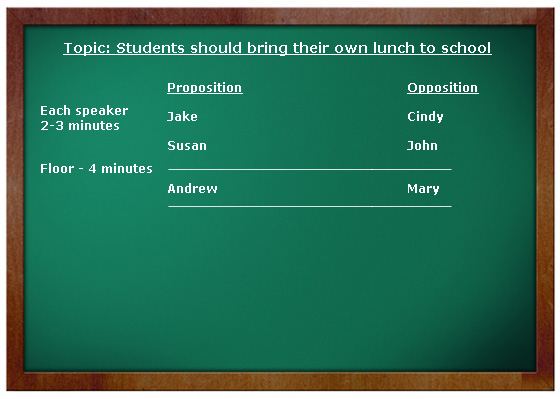
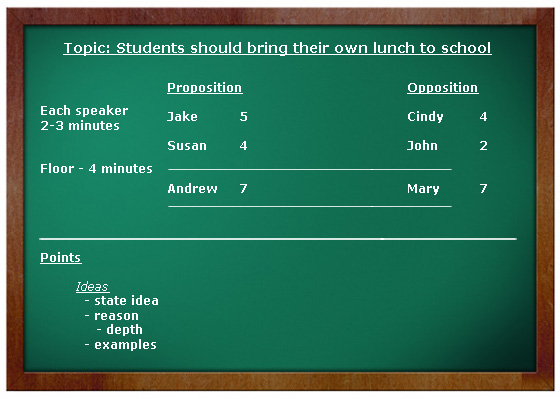
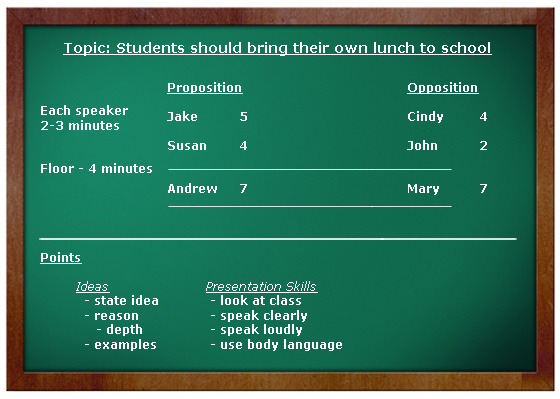
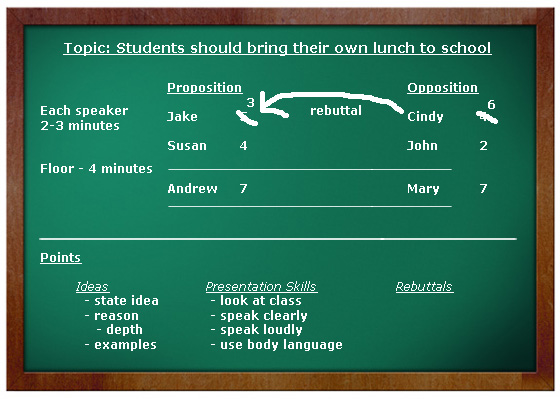
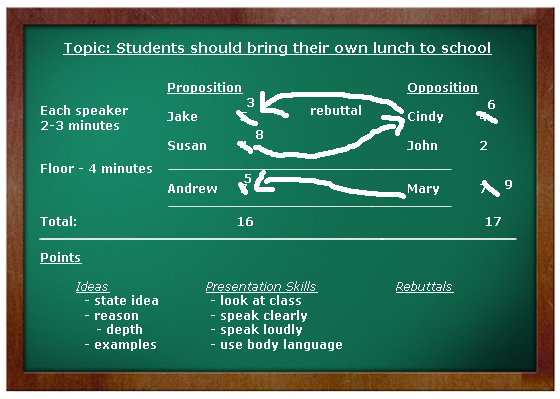


 Game Design Companion: A Critical Analysis of Wario Land 4 - $7.99
Game Design Companion: A Critical Analysis of Wario Land 4 - $7.99 Level Design: Processes and Experiences
Level Design: Processes and Experiences Speed Boost: The Hidden Secrets Behind Arcade Racing Design - $5.99
Speed Boost: The Hidden Secrets Behind Arcade Racing Design - $5.99 Adventures in Games Analysis: Volume I - $5.99
Adventures in Games Analysis: Volume I - $5.99







